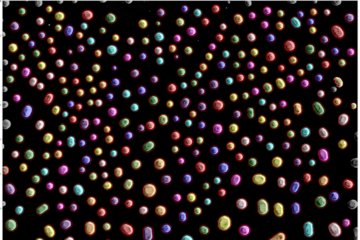All genres
121.
Talk
Microstructure Formation in CMT-, MIG- and Laser-Hybrid Welds. 12. International Metallographie-Tagung, Leoben, Österreich (2006)
122.
Talk
In-situ 3D Investigation of Creep Damage. XTOP 2006, 8th Biennial Conference on High Resolution, X-Ray Diffraction and Imaging, Karlsruhe, Baden-Baden, Germany (2006)
123.
Talk
Internal stresses in Li2O–SiO2 glass-ceramics. 7th European Conference on Residual Stresses (ECRS 7), Berlin, Germany (2006)
124.
Talk
Surface and Bulk Internal Stresses in Li2O-2SiO2 Glass Ceramics. 5th Annual Denver X-ray Conference, Denver, USA (2006)
125.
Talk
In-situ Synchrotron X-ray Studies of Creep Damage in CuZn-Alloys. American Crystallography Association Meeting, Honolulu, USA (2006)
126.
Talk
Werkstoffcharakterisierung mit Synchrotronstrahlung. Seminar des Instituts für Werkstofftechnik, TU Freiberg (2006)
127.
Talk
Materialforschung mit Neutronen und Synchrotronstrahlung. Kolloquium des Instituts für Eisenhüttenkunde, RWTH Aachen, Aachen, Germany (2006)
128.
Talk
Synchrotronstrahlung zur Werkstoffcharakterisierung. DGM-Tag 2006, Berlin, Germany (2006)
129.
Talk
Microstructure and Residual Stresses in partially crystallized Li2O-2SiO2 Glass-Ceramics. 4th Meeting ADEMAT Network, Alicante, Spain (2006)
130.
Talk
Combined Diffraction and Tomography with white and monochromatic high energy synchrotron radiation. ESRF User Meeting, ESRF Grenoble, France (2006)
131.
Talk
Internal Stresses in Oxid Layers on Iron Polycrystals. User Meeting HASYLAB bei DESY, Hamburg, Germany (2006)
132.
Talk
Potential of space-resolved studies on materials with synchrotron radiation: Crystalline texture of dinosaur bones. Department für Geo- und Umweltwissenschaften, LMU München, Germany (2006)
133.
Poster
Comparison of apatite crystallite sizes in sauropod and mammal fossil bones. 6th Bone diagenesis meeting, Poppelsdorfer Schloss, University of Bonn, Bonn, Deutschland (2009)
134.
Poster
Phase composition and internal stress development during the oxidation of iron aluminides. ICRS-8, Denver, CO, USA (2008)
135.
Poster
Microstructure and residual stresses of high-strength steel to aluminium alloy friction stir welds. ICRS-8, Denver, USA (2008)
136.
Poster
In-situ investigation of grain rotations during tensile straining of steel wires. ICRS-8, Denver, CO, USA (2008)
137.
Poster
Friction stir welding of aluminum alloy to steel. Part I: Mechanical properties. VI-PNAM Symposium, Berlin, Germany (2008)
138.
Poster
Friction stir welding of aluminum alloy to steel. Part II: Microstructure. VI-PNAM Symposium, Berlin, Germany (2008)
139.
Poster
Friction stir welding of aluminum alloy to steel. Part III: Material flow. VI-PNAM Symposium, Berlin, Germany (2008)
140.
Poster
In-situ microtomographic investigation of creep in leaded brass. VI-PNAM Symposium, Berlin, Germany (2008)










